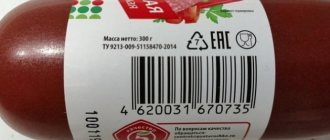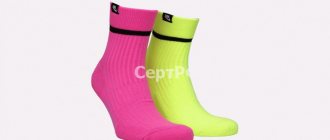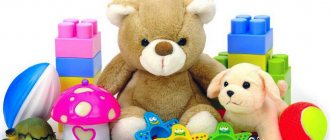HS codes: 4818409000 – 4818500000
4818409000
ADULT DIAPERS OF ULTRA COMPACT BRAND MADE OF CELLULOSE WOOL FOR SANITARY PURPOSE, SIZES: LARGE, MEDIUM
Having a problem? Call our customs specialist:
Moscow and region (call is free)
Saint Petersburg
4818409000
HYGIENE NAPPIES MADE OF CELLULOSE WOOL, INNER LAYER NON-WOVEN MATERIAL FROM ARTIFICIAL FIBERS, OUTER LAYER FILM MADE OF POLYMER MATERIAL, FOR ADULTS: SE-091-MMMM-010 SENI SOFT 90X60 CM EACH 30 PCS - 12 80 UP., SE -091-B010-002 SENI SOFT 60X60 CM 10 PCS EACH - 960
4818409000
BABY DIAPERS. “HUGGIES”: FOR NEWBORN: (1) 1 PACK - 28 PCS * 6 PACK - 60 UP; (2) 66 PCS * 3 PACK - 84 UP, (2) 32 PCS * 6 PACK - 24 UP; (NONWOVENS IMPREGNATED WITH DETERGENT)
4818409000
BABY DIAPERS. “Huggies”: a classic of 1 patch (3) 18pc12pach-108UP, (3) 16CTX12PACH-210UP, (2) 37pkh6pach-18PA, (3) 32pkh6-Pach-60UP, (3) 58pc 3PACH-42UP, (3) 78STH3PACH-144UP; (PAPER PAPER, PAINTED D/ROSE PROD.)
4818409000
BABY DIAPERS “HUGGIES”: ULTRA COMFORT: IN 1UP:(4)44SHTH3PACH-42UP,(4+)40SHTH3PACH-30UP,(5)36SHTH3PACH-25UP,(4)14SHTH12PACH-192UP,(5)11SHTH12PACH-135UP,( 4) 26SHTH6PACH-90UP,(4)50SHTH3PACH-126UP,(5)42SHTH3PACH-84UP,(4)68SHTH3PACH-288UP,(5)58SHTH3PACH-180UP;(FROM PAPER PULSE
4818409000
BABY DIAPERS: “PA SLEEPPLAY SSTAR2 S4 2X86 BULK CEE (RA SLEEPPLAY SSTAR2 S4 2X86 BULK CEE)” (GKAS 81157189) - 1974 UPAK.
4818409000
ABSORBENT PAPER SHEETS FOR INCONTINENCE TENA BED NORMAL: SIZES 60X60 CM - 1554 BOXES X 20 PACKS X 5 PIECES; DIMENSIONS 60X90 CM - 2321 BOX X 24 PACKS X 5 PIECES.
4818409000
HYGIENE NAPPIES MADE OF CELLULOSE WOOL, INNER LAYER NON-WOVEN MATERIAL FROM ARTIFICIAL FIBERS, OUTER LAYER FILM MADE OF POLYMER MATERIAL, FOR ADULTS: SE-091-MMMM-010 SENI SOFT 90 X 60 CM EACH 30 PCS - 2 56 UP.
4818409000
0BABY DIAPERS ON A PAPER BASE: 81190858-1316КК*12 15792Ц/UP PAMPERS SLEEP & PLAY 14PCS.
4818409000
HYGIENE NAPPIES FROM CELLULOSE WASH, INNER LAYER NON-WOVEN MATERIAL FROM ARTIFICIAL FIBERS, OUTER LAYER FILM FROM POLYMER MATERIAL, FOR ADULTS (OKP 839890):SE-091-B030-003 SENI SOFT BASIC 90X 60 CM PO 30 PCS - 504 UP
4818500000
CHILDREN'S DISPOSABLE PAPER BIBS WITH A POCKET FOR CRUMBS "LIBERO" IN CARDBOARD BOXES, PACKED FOR RETAIL IN POLYMER PACKAGINGS, DIFFERENT SIZES
4818500000
CLOTHING ACCESSORIES FOR CHILDREN, ; DISPOSABLE BIB APRONS, MADE OF NON-WOVEN FABRIC (100% CELLULOSE)
You can find additional information on the topic in the Unified Customs Tariff section. Section X
Free consultation by phone:
Moscow and region (call is free)
Saint Petersburg
Attention! Due to recent changes in legislation, the legal information in this article may be out of date!
Our specialist will advise you free of charge.
It is no secret that the adoption of new or clarifying norms of EAEU legislation in the future often entails thematic inspections of declarants by customs authorities regarding the correct classification of certain categories of imported goods according to the EAEU HS codes.
Relatively recently, the Eurasian Economic Commission adopted the Decision “On the classification of disposable baby diapers according to the unified Commodity Nomenclature for Foreign Economic Activity of the Customs Union” No. 156 dated September 16, 2014 (hereinafter referred to as “EEC Decision No. 156”). EEC Decision No. 156 stipulates that disposable baby diapers made from various materials are subject to classification in the commodity item “9619 00” of the Commodity Nomenclature of Foreign Economic Activity. In this case, the assignment of subsequent digits of the HS code should be made depending on the material of the absorbent layer, which gives the diaper its main property - liquid absorption.
Most imported diapers have an absorbent layer, which includes not only absorbents based on acrylic polymers, but also cellulose fibers, which is why many customers declare the import of diapers using the EAEU HS code 9619 00 210 0 and pay customs duties at a rate of 5%. However, in most cases, customs authorities do not agree with the code chosen by the declarant and make their own decision on classification. Based on the results of inspections, customs authorities believe that diapers are subject to classification according to the code 9619 00 900 1 of the EAEU Commodity Classification of Foreign Economic Activity, taking into account that the absorbent function of diapers is performed by other materials (absorbent and other additives), which provides for the imposition of a customs duty on the import of diapers at a rate of 10% of the customs duty cost.
As a result, the results of inspections lead to additional charges to importers of diapers of significant amounts of customs duties, VAT on imports, penalties and administrative fines.
According to paragraph 3 (a) of the Basic Rules for the Interpretation of the Commodity Nomenclature of Foreign Economic Activity, if it is possible to classify goods into two or more product items, then preference is given to the product item that contains the most specific description of the product, compared to product items with a more general description.
In relation to this situation, the Eurasian Economic Commission clarified that in the case where the absorbent layer of diapers is made of various materials (components) with the functions of absorbing and absorbing liquid, none of such materials can dominate in the main function, since none Of the possible criteria, the Basic Rules of Interpretation of the Commodity Nomenclature for Foreign Economic Activity (clause 3 b) for determining the main function of the materials that make up the absorbent layer are not applicable, including quantitative ones.
The above is one of the problems that prevents the possibility of proving the correctness of one’s position on the use of the EAEU CN FEA code 9619 00 210 0.
As a rule, the results of customs inspections are based on the results of commodity examinations conducted by the Central Customs Laboratory at the customs authority. Unfortunately, customs examinations can be carried out solely on the basis of orders from customs authorities. As a result, the objectivity of the results of such examinations can raise reasonable doubts and questions. At the same time, the problem is aggravated by the lack of expert laboratories in Kazakhstan that could conduct such examinations. In view of this, business entities are deprived of the opportunity to order their own examinations to prove the opposite.
Meanwhile, according to the explanation of the Eurasian Economic Commission, when proving the validity of the classification of diapers according to a certain EAEU HS code, the importer can use information, including information received from the manufacturer. In this regard, when proving their position, importers have the right to use the results of laboratory tests from manufacturers as evidence on the legality of using the EAEU CN FEA code 9619 00 210 0.
In addition, it should be noted that Russian judicial practice indicates that in some cases it is erroneous in the classification of diapers by customs authorities according to the EAEU CN FEA code 9619 00 900 1. In a number of cases, Russian courts have come to the conclusion that cellulose is the material that gives the diaper its main property - liquid absorption. In this case, the superabsorbent performs only an auxiliary function of increasing the absorbency of the main absorbent layer.
Unlike Russian practice, at the moment in Kazakhstan there has not yet been a unified judicial practice on the issue of the need to classify diapers according to a certain EAEU HS code. At the same time, given that the Unified Customs Tariff and unified customs legislation are applied on the territory of the Customs Union, there is reason to hope that Kazakh judicial practice will ultimately come to similar conclusions.
Declaration schemes
Declaration of diapers is carried out after state registration (the procedure is the same for all types of products) and can take place according to one of two schemes:
3D - for mass-produced products and 4D for a batch of goods or a single copy.
Both schemes involve testing product samples in an accredited laboratory.
The validity period of the declaration for serial production is no more than 5 years, for a batch or single product - no more than 3 years.
Stages of declaration of diapers
Receipt of the declaration always takes place according to a certain algorithm:
- The applicant collects a package of documents and sends it to.
- The certification center checks documentation and selects samples for the laboratory.
- After receiving the results from the laboratory, a declaration is drawn up and registered in the unified FSA register.
- Then the applicant has the right to label the products with a single sign of circulation of goods on the territory of the Customs Union (EAC).
The cost of filing a declaration depends on the scope of certification work and is calculated individually for each client.
Differences between a declaration and a certificate
According to the technical regulations, an entrepreneur can receive a mandatory certificate for diapers instead of a CU TR declaration. Both documents have equal legal force, but there are a number of significant differences:
| Signs | Certificate | Declaration |
| Form | typographic with several degrees of protection | plain A4 sheet |
| Responsibility for the data contained therein | divided equally between the certification body and the applicant company | solely on the applicant |
List of required documents
To obtain a certificate of conformity for diapers, the interested party must provide:
- copies of the applicant’s statutory and registration documents;
- detailed description of the product – contains the name, composition, characteristics, age of the child, size of the product (indicating the user’s weight) and other information;
- technical documentation defining the procedure for manufacturing products - GOST or TU;
- a copy of the lease agreement for production space;
- supply contract with a list of invoices, specifications and other attachments;
- samples;
- permitting documentation, including ISO certificates, expert opinions and more.
Product classification
Diapers are divided into disposable and reusable. In addition, they are classified by size.
The labeling of baby diapers depends on the weight of the child and varies between different manufacturing countries and brands. Most manufacturers use the following abbreviations:
- up to 3 kg - SSS, size “0”. Used for premature babies;
- from 2 to 5 kg - NB, size “1” or “SS”;
- from 3 to 7 kg - mini, size “2” or “S”;
- from 5 to 10 kg - midi, size “3” or “M”;
- from 9 to 18 kg - maxi, size “4” or “L”;
- from 15 to 25 kg - junior, size “5” or “Big”;
- from 16 to 35 kg - junior extra, size “6” or “XL”;
- from 19 kg - size “7” or “2XL”.
The sizes of adult diapers are selected based on waist size and are indicated:
- from 40 to 60 cm - Extra Small or “0”;
- from 55 to 80 cm - Small or “1”;
- from 75 to 110 cm - Medium or “2”;
- from 100 to 150 cm - Large or “3”;
- from 130 to 170 cm - Extra large or “4”.
Other types of classification:
- purpose: daytime; for toilet training; night; special swimming trunks.
- fastening method: Velcro; panties.
- degree of absorption: normal; increased; high; very high.
- comfort level: special for newborns; simple; increased comfort.
- child gender: unisex; for boys; for girls.
Legal requirements
All baby diapers must meet the requirements of the technical regulations of the Customs Union TR CU 007/2011, which specifies the requirements for goods intended for use by children and adolescents.
The regulation establishes that, first of all, products undergo state registration to verify compliance with sanitary, hygienic and epidemiological standards adopted in the EAEU. After receiving a certificate of state registration, the entrepreneur undergoes mandatory product declaration.
Diapers for adults are also required to undergo state registration and declaration by GOST R.
Why do you need a certificate for diapers?
Certificates for diapers are issued at the request of the entrepreneur in one of the voluntary certification systems (VCS) for additional confirmation of the quality of the products. The validity period of such a document varies from 1 year to 3 years.
A quality certificate is not a mandatory document; it is necessary for those entrepreneurs who are interested in business development and want to gain a number of competitive advantages. These include:
- increasing trust on the part of consumers and counterparties;
- creating a positive image and strengthening market positions;
- growing interest from potential investors.



